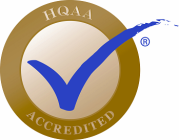Support Surfaces
Group 1: (overlays)
Group 2: (pressure reducing)
Group 3: (air-fluidized bed)
Group 1: Overlays
Medicare Qualifications
Patient must meet at least 1 of the 3 following criteria:
- 1. Completely immobile – Patient cannot make changes in body position without assistance, OR
- 2. Limited mobility – Patient cannot independently make changes in body position significant enough to alleviate pressure OR
- 3. Any stage pressure ulcer on trunk or pelvis.
If the patient meets the second or third of above criteria he/she must also have at least one of the following conditions:
- Impaired nutritional status
- Fecal or urinary incontinence
- Altered sensory perception
- Compromised circulatory status
Required Documentation for Medicare
- Prescription – Written or typed and signed by the prescribing doctor.
- Detailed Written Order – Must be signed and dated by the treating physician (prior to delivery).
- Chart Notes - Including information why a Group 1 is medically necessary (must comply with Qualifications).
- Face to Face Evaluation – Completed Face to Face evaluation from physician for most Group 1 Support Surfaces.
If you are in need of more detailed information please click the link below to access the LCD.
Group 2: Pressure-Reducing
Medicare Qualifications
Coverage considered if beneficiary meets criteria for at least one of the following three criteria:
- The beneficiary has multiple stage II pressure ulcers located on the trunk or pelvis which have
failed to improve over the last month, during which time the beneficiary has been on a comprehensive ulcer treatment program including each of the following:
- Use of an appropriate group 1 support surface, and
- Regular assessment by a nurse, physician, or other licensed healthcare practitioner, and
- Appropriate turning and positioning, and
- Appropriate wound care, and
- Appropriate management of moisture/incontinence, and
- Nutritional assessment and intervention consistent with the overall plan of care.
- The beneficiary has large or multiple stage III or IV pressure ulcer(s) on the trunk or pelvis.
- The beneficiary had a myocutaneous flap or skin graft for a pressure ulcer on the trunk or pelvis within the past 60 days, and has been on a group 2 or 3 support surface immediately prior to discharge from hospital or nursing facility within the past 30 days.
Required Documentation for Medicare
- Prescription – Written or typed and signed by the prescribing doctor.
- Detailed Written Order - Must be be signed and dated by treating physician (prior to delivery).
- Chart Notes - Including information why a Group 2 is medically necessary (must comply with Qualifications).
If you are in need of more detailed information please click the link below to access the LCD.
Group 3: Air-fluidized Bed
Medicare Qualifications
Patient must meet ALL of the following:
- Stage III (full-thickness tissue loss) or stage IV (deep tissue destruction) pressure sore.
- Bedridden or chair bound as a result of severely limited mobility.
- In absence of an air-fluidized bed, the patient would require institutionalization.
- The air-fluidized bed is ordered in writing by the beneficiary’s attending physician based upon a comprehensive assessment and evaluation of the beneficiary after completion of a course of conservative treatment designed to optimize conditions that promote wound healing. The evaluation generally must be performed within one month prior to initiation of therapy with the air-fluidized bed.
- The course of conservative treatment must have been at least one month in duration without
progression toward wound healing. This month of prerequisite conservative treatment may include some period in an institution as long as there is documentation available to verify that the necessary
conservative treatment was rendered. Conservative treatment must include:
- Frequent repositioning of the beneficiary with particular attention to relief of pressure over bony prominences (usually every 2 hours); and
- Use of a Group 2 support surface to reduce pressure and shear forces on healing ulcers and to prevent new ulcer formation; and
- Necessary treatment to resolve any wound infection; and
- Optimization of nutrition status to promote wound healing; and
- Debridement by any means, including wet-to-dry gauze dressings, to remove devitalized tissue from the wound bed; and
- Maintenance of a clean, moist bed of granulation tissue with appropriate moist dressings protected by an occlusive covering, while the wound heals.
- Education of the beneficiary and caregiver on the prevention and management of pressure ulcers; and
- Assessment by a physician, nurse, or other licensed healthcare practitioner at least weekly, and
- Appropriate management of moisture/incontinence.
- A trained adult caregiver is available to assist the beneficiary with activities of daily living, fluid balance, dry skin care, repositioning, recognition and management of altered mental status, dietary needs, prescribed treatments, and management and support of the air-fluidized bed system and its problems such as leakage.
- A physician directs the home treatment regimen, and reevaluates and recertifies the need for the air-fluidized bed on a monthly basis.
- All other alternative equipment has been considered and ruled out.
Required Documentation for Medicare
- Prescription – Written or typed and signed by the prescribing doctor.
- Detailed Written Order - Must be signed and dated by treating physician (prior to delivery).
- Chart Notes - Including information why a Group 3 is medically necessary (must comply with Qualifications).
- Face to Face Evaluation – Completed Face to Face evaluation from physician.
If you are in need of more detailed information please click the link below to access the LCD.
Contact Us
Russell Medical, Inc.
4410 Dillon Lane, Suite 17
Corpus Christi, TX 78415
Phone: (361) 808-7382
Email: info@russellmedical.com
Or use our contact form.
Business Hours
Monday - Friday
9:00 AM - 12:00 PM
1:00 PM - 5:00 PM



